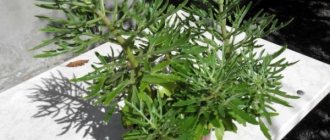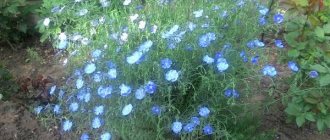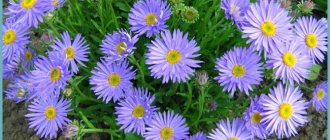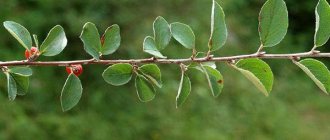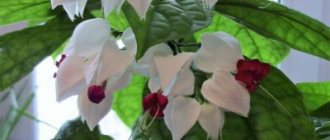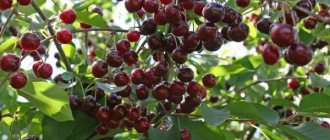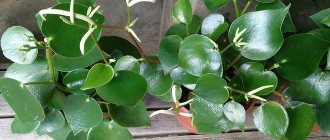The genus Allium contains more than six hundred species of plants that are cultivated by humans. Flowering alliums are a separate class - decorative onions that have been decorating gardens since the 17th century. In the article I will give a short overview of the species, and also tell you how to plant ornamental onions, their planting and care, and the use of the plant in landscape design.
Decorative onions in the landscape
What is a decorative onion
Ornamental onions - belongs to the same genus as cultivated onions. Flowering onion plants are very elegant and are an extraordinary find for flower beds, mixborders and landscape design. During the growing season, decorative onions are similar to onions - the same basal rosette of feathers (leaves) that have a characteristic smell when cut. what we used to call an ornamental onion flower is actually an inflorescence consisting of many lonely star-shaped flowers. Each species and variety is individual, therefore, onions bloom from early spring to autumn. Having looked closely at each plant, you can create mixes for alpine slides and flower beds. Properly selected plants will delight the whole season, without interruption.
Onion inflorescences are 3-5 cm in diameter, but some individuals have balls up to 30 cm . Basically, onions bloom from May to early July, but late bloomers delight with inflorescences in the fall. Some hybrids bloom for a long time (up to one month) and, even after it ends, the heads with seeds do not lose their appearance. The dried inflorescences of Christophe's onion have a charming appearance in the autumn garden, and look no worse than purple balls in the spring.
Christophe's onion inflorescence
Varieties
More than a hundred varieties of decorative onions are known. The following varieties are the most popular:
Aflatun onion
The plant is perennial and mainly ornamental. Its leaves can be eaten, but only before flowering. It occurs in May-June, the flowers are light purple in color. The flowers are star-shaped. The inflorescences are spherical, the flowers are small. The stem can reach 1.5 m in height and 12 cm in diameter. The plant prefers middle and upper mountain zones and is frost-resistant.
Bulgarian onion
The height of the stem can reach 90 cm. Flowering occurs at the beginning of summer, the color is purple-white, the appearance is very impressive.
Gladiator
Decorative perennial with dark green leaves, edible. The stem can grow up to a meter in height. The flowers are star-shaped, blue-lavender in color, and have a pleasant sweetish smell. A spherical inflorescence is formed, which can reach a diameter of 20 cm.
Dutch onion
The peduncle of this decorative perennial can stretch up to 2 m in height. The diameter of the inflorescences reaches 25 cm, the color is white or deep purple.
Blue onion
This species is edible - the bulbs are eaten. It is used for decorative purposes because of its blue, wide-bell-shaped flowers. They reach only 5 mm in length and form an umbrella of a spherical or hemispherical shape. The stem can reach 90 cm in height.
Mountain-loving onion
The plant is perennial, prefers gravelly slopes and the upper mountain belt. The stems grow to 5-10 cm, the flowers are small, but notable for their pink-purple color. Flowering occurs in July-August.
Gigantic Bow
A perennial species, used for decorative purposes, the leaves are edible. The height of the stem can reach 1.5 m. The color is light purple.
Karatavsky
The height of the stem of this perennial reaches 15-25 cm, so the inflorescence appears especially large. The color is light pink-violet. This species is used as an ornamental plant not because of its flowering, but because of its unusually wide and dense leaves.
Kovani
The perennial attracts with its early flowering - it occurs in May-June, but lasts only 2-3 weeks. The plant is low-growing, the height of the bush rarely exceeds 30-40 cm. The inflorescences are spherical in shape and very impressive. The color is white, the smell is pleasant.
Roundhead
The perennial prefers steppes, slopes and hills. The stem can grow up to 80 cm. Flowering occurs in mid-summer and lasts about a month. The color can be pink, lilac, purple. The inflorescences are oval in shape.
Ostrovsky's bow
A low-growing perennial - the height of the stems rarely exceeds 20 cm. The plant attracts with its decorative effect - wide bell-shaped crimson flowers with a pleasant smell. The diameter of the inflorescences can reach 10 cm.
Bow of Christophe (Star of Persia)
This decorative perennial prefers soft slopes and the lower mountain belt. The stems reach a height of 40 cm, their thickness is 15 cm. The flowers form a ball with a diameter of up to 20 cm. Their shape is star-shaped, the color is pink-violet or purple-violet. Flowering in June, after which the leaves die off.
Schubert bow
This perennial is native to Asia. The plant prefers sand and gravelly slopes of the lower mountain belt. The plant is low-growing - the stems do not exceed 20-30 cm in height. The leaves are slightly longer, linear-lanceolate in shape, 2-3 cm wide. The perianth is star-shaped, white or pinkish in color.
The flowers are located on long stalks that reach 10-20 cm in length. Flowering occurs in June.
Moli
A perennial plant used for ornamental, culinary and medicinal purposes. The stem height is up to 30 cm, the flowers are star-shaped and yellow. The onion, which has a strong garlic odor, is eaten.
Neapolitan onion
The height of the bush reaches 25-35 cm. The flowers are pink and wide-ringed, 1-1.5 cm long, forming a flat or slightly convex umbrella inflorescence.
Pink onion or roseum
The plant is used only for decorative purposes. The stems can grow up to 40 cm. The flowers are small, can be fawn or pink, and form a flat umbrella.
Chameleon
This variety of decorative onion appeared as a result of breeding work. The result is a frost-resistant plant with a long flowering period, which occurs from June to August.
The bush reaches a height of 50-60 cm. The inflorescences are spherical in shape, with a diameter of 6-7 cm. The flowers are star-shaped, the main color is pastel pink, with a bright crimson stripe running down the center of the petal.
Pretty
The height of the plant reaches 50-60 cm. The pedicels droop, so the bush is compared to a fountain. The flowers are small, usually purple-lilac in color. Flowering occurs in June, loose umbrella-shaped inflorescences are formed.
Chives
It is also called skoroda, sibulet onion or chive. The plant is a perennial and is used for decorative purposes and for food. The onion reaches a height of 60 cm. Flowering occurs in May-August, the color ranges from pale pink to pink-violet.
Chives are grown not only in open ground, but also at home in pots or boxes.
Eros
The height of the stem reaches 30 cm, and the diameter of the spherical inflorescences is 10 cm. Flowering occurs in June, the color is varied - from pink to light lilac.
Unifolium
This variety is also called single leaf onion. Its homeland is the far west of North America. The height of the stems is small and rarely exceeds 20 cm. The flowers are 1-1.5 cm in diameter of a beautiful bright pink color, sometimes white.
Ivory Queen
The height of this plant does not exceed 25 m. Flowering occurs in May-June and lasts about 3 weeks. The flowers are light, collected in spherical umbrellas. The attractiveness of this variety of ornamental onion lies not in the flowers, but in the leaves. They are long, wide and corrugated.
Description and origin of culture
All onions can be divided into edible and decorative. Some species fall into both categories.
Allium (ornamental onion) belongs to the Allium subfamily (Alliaceae) of the large Amaryllidaceae family. It is a herbaceous, perennial (sometimes biennial) plant. It has linear (thin), belt-shaped (wide) leaves, hollow (vocal) inside, which grow as a rosette from a bulb - a modified shoot. Some species have rhizomes. The peduncle is thick, reaching one meter or more in tall ones. Flowers on tall peduncles are collected in spherical inflorescences, the color and size of which depend on the varietal and species characteristics.
The culture was first described in 1753 by Carl Linnaeus. In the famous work “Species plantarum” (“Species of Plants”), the author describes 31 types of onions. The species was brought to Western Europe in the 17th century from Asia. Today, according to The Plant List website, there are more than 900 species in the onion genus, growing in all types of natural zones of the northern hemisphere.
Reproduction
Allium is propagated:
- bulbs;
- seed;
- bulbs;
- dividing the rhizome.
In the first case, it is not recommended to sow underdeveloped seed pods. Otherwise the plant will have a dull color. Almost any type of onion is grown in this way. The disadvantage of this method is that allium will bloom only in the third year at best.
With vegetative propagation, flowering is observed already in the first year. However, not all types of allium can be grown using this method: many do not produce “babies,” and not all have rhizomes suitable for division.
Some varieties of allium produce bulbs. These are small bulbs located not in the ground, but on the top of the peduncle.
Use in landscape design
Allium is widely used in landscape design. Bows in garden design are loved for their lush flower heads. Even after stopping long-term flowering, alliums have a very beautiful, exquisite-looking seed head. Due to the fact that the lower part of most plants remains bare, decorative onions must be combined with other representatives of the plant world that bloom at the same time. Decorative gardening experts recommend combining it with poppies, irises, and peonies. For later varieties, you can use different types of Hosta. You can cover the “long legs” of onions with early yellowing leaves with perennial geraniums with carved leaves and small flowers that match the ball-inflorescences. It has become popular to plant onions among rose bushes.
Magnificent colorful carpets are obtained by planting allium very densely (50-70 bulbs per 1 square meter), but you need to remember to take more care in fertilizing the soil. Alliums are widely used in landscape design for flower beds. They look especially beautiful in noble gardens, combining perfectly with hedges of trimmed plants.
Decorative bow in landscape design
Onions with other flowers in the flower bed
Care
Decorative onions require comprehensive care. The conditions for its cultivation are quite simple.
Watering
This stage of care is especially important during the growing season. In May, the soil must be watered abundantly so that it is moistened by 20-25 cm. After watering, loosening is necessary. Mulching is also useful - you can use any bulk material, including mowed grass.
At the end of the growing season, decorative onions practically do not need watering. It should be carried out as needed if dry weather sets in.
Feeding
Ornamental onions are sensitive to the potassium content in the soil, so appropriate fertilizing should be done regularly. It is also useful to add wood ash and compost.
Decorative onions need fertilizing several times a season - during active foliage growth, during the formation of buds and during the formation of bulbs. Autumn feeding is also required to help the plant endure winter more easily. During this period, it is better to use granular potassium-phosphorus fertilizers.
Decorative onions also need fertilizer in early spring, when the snow has just melted. This feeding gives him strength for further growth and development. It is necessary to loosen the soil and apply complex mineral fertilizer - dry or solution. Fertilizer should not fall on the sprouts. If you use granular fertilizer, you need to carefully seal it so that all the granules are hidden underground.
At the end of the growing season, per square meter you can add:
- superphosphate and potassium sulfate - 40-60 g of each type;
- bone meal (70-100 g) and 2 shovels of wood ash;
- ready-made complex fertilizer, use according to instructions.
Trimming
Before flowering, the leaves begin to die, and the bulb begins to actively accumulate nutrients. You cannot pick off the leaves at this stage, otherwise the plant will suffer in the future.
If you do not plan to collect seeds for propagation, then it is better to trim off the wilted flowers. Be sure to leave 3-4 leaves - the bulb needs them to carry out photosynthesis.
Leaves and stems should be trimmed when they turn completely yellow after flowering. This sign indicates that the bulb has finished accumulating nutrients.
Watch the following video about planting and caring for decorative onions:
Diseases and pests
Ornamental onions are susceptible to diseases and pests that are standard for their species:
- Downy mildew . This disease is also called downy mildew. It appears as vague pale green spots on the leaves and flower shoots, as well as the development of myceliums with gray-violet spores. It is necessary to remove the affected parts of the plant. As a preventative measure, spring treatment with fungicides is needed.
- Cercospora blight, also called leaf spot . Not only they are affected, but also the peduncles on which gray spots appear. It is necessary to remove the affected parts of the plant and spray it with a copper-containing product.
- Rust . This disease can come along with heat. First, orange balls appear on the leaves, then spores form. The methods of struggle are similar to the previous paragraph.
- Black mold . The disease can affect ornamental onions in mid-summer. It manifests itself as yellowing of the leaves and the appearance of plaque on them. Treatment involves removing affected leaves and using copper-containing products. Prevention is compliance with the rules of planting and caring for the plant.
- Onion fly and root mite . Infection by both pests leads to plant death. As a treatment, tobacco dust and ash are used for dusting or an infusion of them for spraying. It is also useful to add black pepper to this composition. You can also use dichlorvos, not forgetting about personal protection measures. Prevention consists of proper preparation of planting material.
Regular inspection of plants allows you to promptly identify signs of disease and pests. If you take the necessary measures right away, you can avoid many problems.
Decorative onions are quite unpretentious and do not require much effort when growing. Using different types of this plant in combination with other flowers allows you to create an original landscape design on your site.
0
0
Copy link
Features of cultivation
Landing dates
Early flowering onions are recommended to be planted in the fall, and late flowering onions in early spring. Planting times are different for each region. You need to know when garlic is planted in a given area for the winter, and food onions in the spring - this will be the time to work with decorative onions. Planting and care in open ground are simple.
Site selection and soil preparation
Onions are light-loving plants. To grow them, choose a well-lit area near buildings or fences. A flower bed with onions will look impressive if you lay an interesting garden path to it.
- The selected area needs to be dug up,
- remove weeds and remove the top part of the soil (we'll talk about it later).
- We spill the soil with a solution of Fitosporin, according to the instructions for use.
- We place expanded clay drainage into the hole in the soil, cover it with a 15 cm layer of sand, compact it and lay the prepared soil on top.
Soil preparation. For the upper ball of the allaria, we take the soil removed earlier and prepare a nutrient mixture:
- 2 buckets of earth
- 1 bucket of rotted compost,
- 1 glass of lime,
- 2 tablespoons of superphosphate,
- 2 cups wood ash.
- Mix all this thoroughly.
Allium is unpretentious to the soil, but grows better on light loams.
Preparation of planting material
Before planting, the bulb must be carefully inspected for the presence of blossom rot. If they are present, it is necessary to cut off the infected areas to a healthy part with a sterile knife and place them in a solution of potassium permanganate. Leave for half an hour. Dry and plant.
Bulbs can be treated with Yaros. This is a new drug based on natural microorganisms. It has a very beneficial effect on the plant in different phases of development.
When propagated by seeds, they must be stratified - doused with boiling water or soaked in water until the bolls begin to crack. Seeds and bulbs are also soaked in solutions of growth stimulants.
Decorative onions in the garden
Planting decorative onions in open ground
Onion seeds are sown before winter in a separate bed. In winter, they will undergo natural hardening and, if you have high-quality seed material, will have friendly shoots. In the spring, when the plants are fully formed, we transplant the plants along with a lump of earth onto an alpine hill.
Onions grown from seeds bloom only in the third year, and tall species - in the fifth year.
Most alliums are propagated from bulbs or rhizomes. This is due to the fact that breeders offer hybrids, and the seeds will not produce a mother plant.
To plant allium from a mature bulb, at the beginning of autumn you need to make a hole in dry soil that is three times the size of the bulb, plant it, sprinkle it with rotted compost and make a 2-3 cm layer of peat mulch (or fallen oak leaves) on top.
Reproduction methods
Allium is propagated in several ways. The most common vegetative method is propagation by bulbs . It is advisable to dig them up every year, dry them, treat them with growth stimulants and microfertilizers in order to preserve the bulbs until spring; they are placed in dry sawdust and, when warmer, they are planted in a fertilized area. In natural areas, with a climate more favorable for onions, the bulbs are left to overwinter in the soil. It must be remembered that the bulbs tend to divide and with such care they thicken and bloom worse.
Rhizome species are grown for 3-5 years in one place and propagated by dividing the bush. When growing such plants in a perennial crop, the plantings must be thinned out and self-seeding prevented. The optimal planting time for this propagation method would be early spring or late summer, so that the seedlings take root well before frost.
ornamental onions from seeds is very time consuming. Therefore, propagation by seeds is rarely used in private gardening. This method is unacceptable for modern hybrid varieties. There are types of onions that, when propagated by seeds, begin to bloom only in the 3rd to 8th year. Nobody is willing to wait that long.
Different types of decorative onions
Landing
Decorative onions propagate in different ways, so there are several options for planting them.
Seeds
When planting ornamental onions with seeds, it should be taken into account that flowering will occur only after a few years - the specific timing depends on the chosen variety. Species with particularly large inflorescences can bloom only in 6-7 years.
Ornamental onion seeds can be purchased at the store or prepared yourself if such a plant already exists on the site. In the second case, planting material must be collected from the earliest and largest inflorescences. They need to be selected in advance, but the seeds must be collected only after flowering has ended and they have fully ripened.
Features of sowing seeds of ornamental onions depend on the characteristics of the selected variety. This also applies to planting dates. Sowing in open ground can be done in autumn or spring. Some varieties require winter sowing, since with this option the seeds undergo natural stratification.
When planting decorative onions with seeds, you must proceed according to the following algorithm:
- Artificial stratification . This stage is only necessary when planting the crop in the spring. You need to wrap the planting material in a damp cloth and leave it for 2-3 days. Be sure to moisten the fabric as it dries.
- Disinfection . Potassium permanganate is used for this. The solution should be slightly pink in color; the seeds should not be kept in it for long.
- Preparing the soil and sowing seeds . There is no need to deepen them - 1-2 cm is enough. Sprinkle with earth on top and water.
Seed germination is low, so you can first grow seedlings and then plant them in open ground. You need to act as follows.
- Soak the seeds . You can start planting when they hatch.
- Prepare the substrate using turf soil, peat and humus. You can buy a ready-made mixture.
- Plant the seeds in a suitable container.
- Plant seedlings after emergence.
- Harden off the seedlings . You should start 2 weeks before planting in open ground. First, take the seedlings out into the fresh air for only a quarter of an hour, then increase this time.
- Transfer the seedlings to a permanent place 60-70 days after sowing the seeds.
- Prepare the area for planting . Loosen and level the ground. Make furrows, going 10 cm deep. Water them and the seedlings themselves. Carefully transfer it to the prepared area.
When a plant is propagated by seeds, a change in the characteristics of a particular variety may be observed. More often this is reflected in the color of the inflorescences, which becomes paler.
Bulbs
In this way, you can plant decorative onions for the first time or replant an old plant. The second option is recommended to be used when the plant is 5 years old, if it was also planted as a bulb.
You need to dig up the bulbs after the seeds have fully ripened and the leaf blades have dried. It is recommended to resort to this measure not only for replanting and propagating the plant, but also every year for winter storage. Dug up bulbs need a temperature of up to 18-20 degrees. To prevent them from drying out, you should use peat or sawdust.
When planting decorative onions, you need to follow the following algorithm:
- Select planting material . The bulbs must be strong and healthy. Loose and weak specimens should be disposed of.
- Prepare planting material . At this stage, you need to take care of the prevention of diseases and pests. It is necessary to prepare a solution of a suitable fungicide according to the instructions and immerse the bulbs in it for half an hour. Afterwards, the planting material must be dried. To prevent pests, the bulbs should be heated at 40 degrees for 12 hours. This is done immediately before landing.
- Prepare the area for planting . It must be dug up, loosened and leveled. Add fertilizer if necessary.
- Prepare the wells . Be sure to make drainage - pour 2-3 cm of sand. It will absorb excess moisture.
- Plant the bulbs . The planting depth depends on the size of the planting material and should be twice the length of the bulb including the bottom. The distance between plants should be based on their size: for small specimens 10 cm is enough, for large ones – from 20 cm or more. If you plant decorative onions in groups, leave approximately 35 cm between them.
- Sprinkle the soil generously . The moisture should reach the bottom of the bulbs.
Bulbs
This method of propagation is not suitable for all types of decorative onions, since not all of them form bulbs. This interesting name refers to the small bulbs that form on the inflorescences. You can provoke and enhance their formation by trimming the buds and treating the bush with a growth stimulant.
Bulbs should be planted in the fall. This must be done before frost so that the plant has time to take root. It is important to deepen the bulbs correctly, taking into account their size: small and medium-sized specimens should be buried by 5-6 cm, and larger ones by 8 cm.
The attractiveness of propagating ornamental onions by bulbs lies in the fact that such planting material is free from phytopathogens. This means that flowering will begin as early as possible, including next year.
An important advantage of propagating ornamental onions by bulbs is the preservation of all the characteristics of the mother plant. This means that it will gain the same height, but the color saturation will be maintained.
Fertilizer and feeding of allium
When growing allium in open ground, compost, wood ash, and mineral preparations are used as fertilizer. It is necessary to provide feeding onions during the leaf growth phase, during budding, as well as the formation of bulbs.
Onions require feeding at least once a season
Landscape design specialists recommend using complex fertilizers containing nitrogen in nitrate form for these purposes. In the summer months, you can water the plants with liquid solutions of mineral fertilizers. At the beginning of autumn, to ensure a good wintering, decorative onions need to be fed with phosphorus-potassium fertilizers; the granules are applied to the soil without prior dissolution.
Diseases and pests
Allium mix
Improper planting, care and stagnation of water in the soil become the causes of fungal diseases such as neck rot and downy mildew.
When the first disease occurs, the fungus appears on dying foliage and soon spreads to the bulb. Infected samples do not rot immediately, but only during storage. Cervical rot can be combated only with preventive measures. To do this, freshly dug onions need to be dried in the sun and then heated at +48°C.
Allium suffering from downy mildew should be heated at +40...+42°C and treated with a fungicide solution. This fungus can be identified by the gray-violet fluff on the back of the leaf and yellowish spots on the upper side.
Pests that plague ornamental onions include tobacco thrips and onion flies.
Tobacco thrips, which prefer varieties with white flowers, are eliminated with the help of insecticides (Spintor, Vermitek and others). Infected plants become lethargic and gradually dry out. For prevention, it is recommended to maintain high air humidity in the flower garden.
The onion fly and its larvae infect bulbs. The presence of parasites can be noticed by leaves turning yellow ahead of schedule. Early planting and the use of drugs such as Medvetox-U will help protect allium. During the period of deposition of larvae, you need to use a solution of table salt (200 g per 10 liters of water), which is recommended to be applied once a week.
High anzurs or mountain bows
Anzurs, or mountain onions , are a group of tall onions native to the mountains of Central Asia, which have common characteristics and requirements for cultivation. Anzurs have a short growing season: spring - early summer; the average height is 100–150 cm, the diameter of the inflorescences is 6–12 cm. Ansuras bloom in late May - early June.
These are large onions, planting density depends on the effect you want to get in the spring, but, as a rule, no more than 50 bulbs per 1 m2.
Sometimes some types of onions self-sow. Young onions bloom in the 2nd–4th year.
The most popular anzurs: giant onion, aflatun onion, stalked onion, Suvorov onion, high onion and highest onion.
Giant onion
How to plant allium in open ground
In order for the onion miracle to take root in the garden, and for the work not to be in vain, it is necessary to study and observe all the subtleties. One of the key points is landing time. It is chosen depending on the flowering period of a particular species.
Autumn planting is carried out before the onset of the first cold weather at a stable temperature no higher than +10°C. Suitable for varieties whose flowers bloom early, at the beginning of the summer season.
Spring planting is recommended for varieties that bloom later than others. Gardeners recommend waiting until the ground thaws and the air temperature does not drop below +5°C.
How to choose and prepare a place
The ideal home for allium will be an area that receives the maximum amount of sunlight. The preferred location is on the southern slopes. In shaded places, flowers and leaves lose their elegance: they become smaller and paler. It is also worth paying attention to the fact that tall varieties need protection from the wind, so they should be placed next to larger plants.
Allium is not capricious in terms of the composition of the soil, but it, as a representative of the bulbous plants, is acutely aware of the lack of potassium. Therefore, before planting, it is worth fertilizing the soil with ash, compost and mineral fertilizer.
Another important point is the permeability of the soil. If water lingers in the soil, the bulbs will begin to rot, which will lead to the death of the plant. Therefore, the plant needs a decent layer of drainage or the presence of river sand in the soil.
The depth of the planting holes depends on the size of the bulbs: large samples will need 25 cm, and small ones – 10-15 cm. The distance between them is selected according to the following principle. If you plan to dig up the “roots” for a dormant period and plant them again in the fall, then several bulbs can be placed in one hole at once. This first option is preferable in areas with heavy and wet soils.
If the bulbs remain in the ground for several years, then you need to take into account that they will multiply. In this case, there should be at least 25-30 cm between the holes for tall varieties and 10-15 cm for medium-sized varieties.
After planting, it is important to mulch (cover) the soil with pine needles, leaves or peat mulch. This blanket will protect you from frost and weeds.
All bows can be divided into several categories based on color.
Purple and lilac decorative bows
Giant onion, Aflatun onion, Karatavi onion, Christophe onion, bowed onion, pretty onion, Schubert onion, Ambassador onion, Gladiator onion, John Dix onion.
Blue decorative bows
Blue onion
White decorative bows
Strange onion, Neapolitan onion, Zebdan onion, Black onion, Mount Everest onion, Gracefull Beauty onion, Ivory Queen onion.
Zebdan onion
Yellow decorative bows
Molya onion, yellow onion
Molya onion is a plant 15–25 cm high. It blooms in June. Disadvantages include early yellowing of foliage.
Pink and reddish decorative bows
Sicilian onion, Roundhead onion, Pretty onion, Drooping onion, Ostrovsky onion, Silver Spring onion, Summer Drummer onion, Forelock onion, Rosy Giant onion
Round onion is a beautiful onion that is usually planted in flower beds with other perennial herbs. As the flowers bloom, the color of the umbrella changes successively. About 60 cm high. Stable.
Dark burgundy decorative bows
Onions are dark purple, onions are black and purple.
